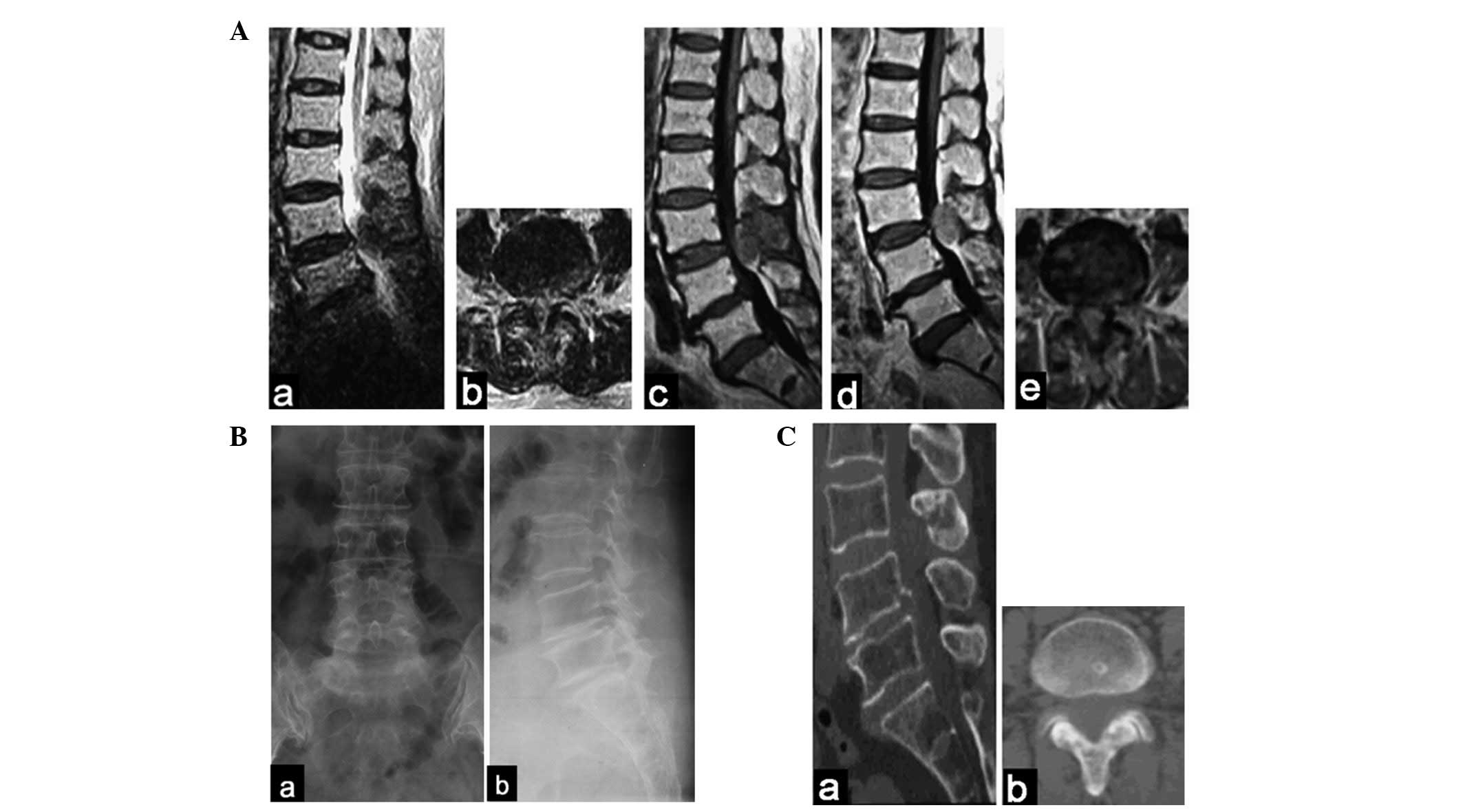Easily misdiagnosed delayed metastatic intraspinal extradural melanoma of the lumbar spine: A case report and review of the literature
- Authors:
- Published online on: April 10, 2013 https://doi.org/10.3892/ol.2013.1299
- Pages: 1799-1802
Metrics: Total
Views: 0 (Spandidos Publications: | PMC Statistics: )
Total PDF Downloads: 0 (Spandidos Publications: | PMC Statistics: )
Abstract
Metastatic melanoma of the spine usually occurs as vertebral metastatic melanoma or intramedullary spinal cord metastatic melanoma. The present study reports a case of easily misdiagnosed delayed metastatic intraspinal extradural melanoma of the lumbar spine. A 67‑year‑old female patient presented with lower back pain accompanied by progressive intermittent claudication. Magnetic resonance imaging (MRI) suggested compression of the lumbar spinal cord caused by an extradural mass. The mass showed T2‑hypointensity, T1‑hypointensity and slight enhancement following a gadolinium‑contrast injection. The patient had been diagnosed with a vulvar melanoma 13 years previously and had also undergone a resection of this tumor. A current diagnosis of a lumbar stenosis resulting from hypertrophy of the ligamentum flavum was suspected. However during corrective surgery, a dark gray solid mass was observed. An L3 laminectomy and removal of the tumor was performed. The tumor was confirmed to be a malignant melanoma by histopathological investigation. The patient was treated with radiotherapy and immunotherapy. At the final 13‑month follow‑up, the patient showed no signs of recurrence. It may be concluded that an early diagnosis of metastatic melanoma was prevented by delayed metastasis, the location of the mass and its unusual appearance in MRI scans. In such cases, early surgical removal and an appropriate comprehensive treatment are critical for patient survival. These observations suggest that caution should be used in the diagnosis of similar cases.












